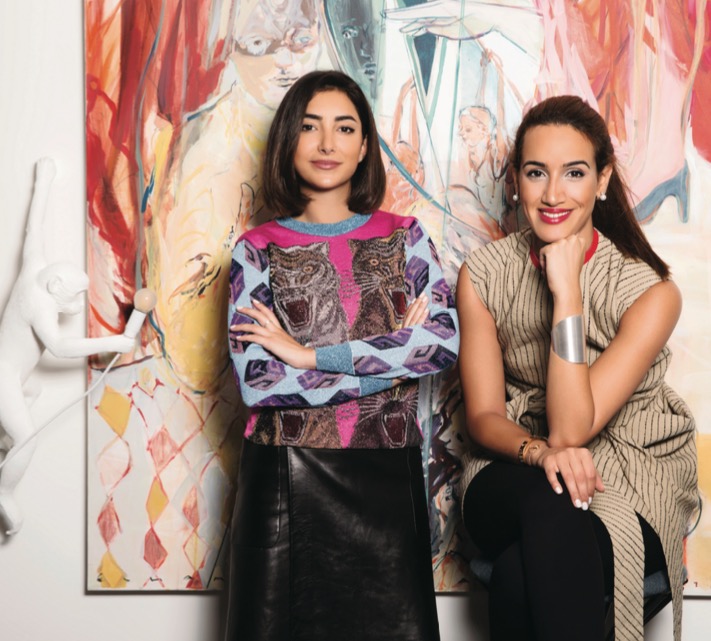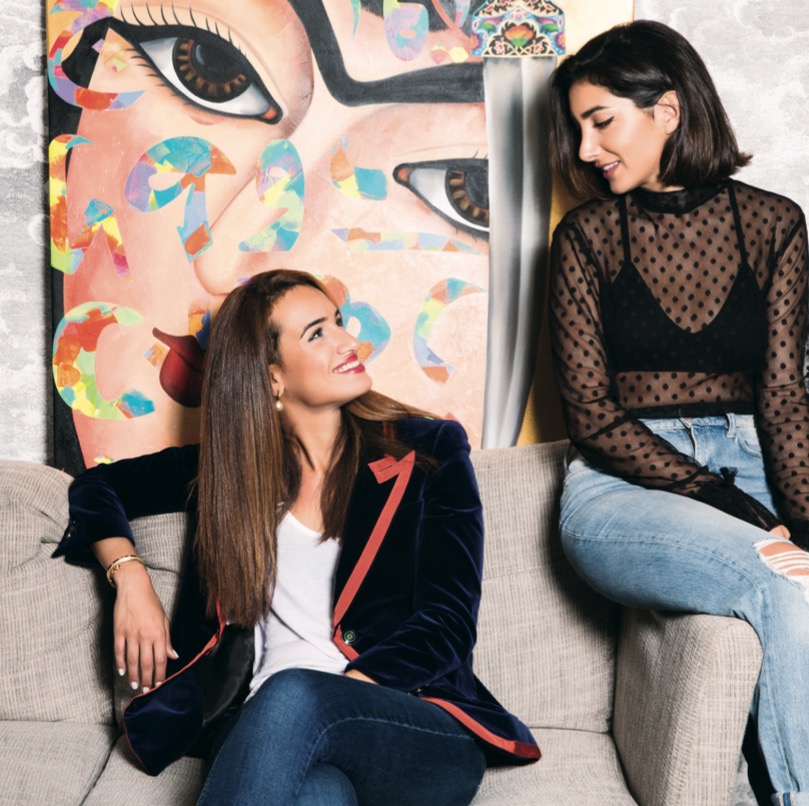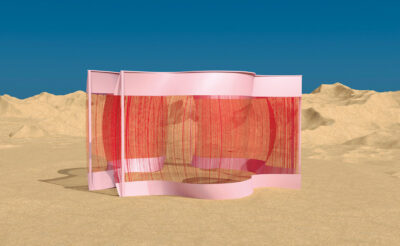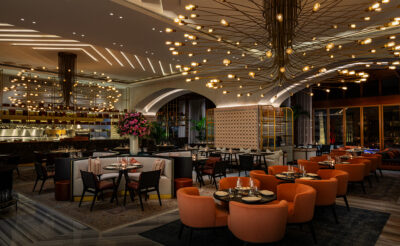We get to know Dima Abdul Kader and Nikki Meftah, the creative minds behind the Emergeast.
In our current June issue, we got to know Dima Abdul Kader and Nikki Meftah, two entrepreneurial friends working to shine a digital light on regional art. Here, they speak to us about their platform Emergeast and share their tips on investing in art.
When did your fascination with art begin?
Dima: My art journey began straight out of university where I turned to painting and appreciating contemporary artists of our time. I felt through creative expression and discourse a number of social, political and emotional themes can be discussed and embraced at length in inventive ways – a route that I felt very comfortable with and connected to as a person.
Nikki: I have always been surrounded by art. Before they met, both my parents lived in many different countries and one keepsake they always moved with them was a piece of art. Growing up, they focused on Iranian collections, books and collector’s items. My concrete fascination began when I saw the ‘Woman of Allah’ series by Shirin Neshat. Like Shirin, I wanted to somehow propagate Iranian culture and heritage to an international audience.
What was the first piece of art you purchased?
Dima: It was during the time I was living in London and stumbled upon an affordable art gallery and happened to connect with a French artist duo who used metal scraps from billboards found around France. Upon acquiring the artwork I immediately felt like I bought a piece of the artist’s story and message and realised how easy it was to collect art. The significance behind this experience inspired the inception of Emergeast, as I aimed to give young/first time collectors the chance to feel the same exhilarating experience.
Nikki: It was a large scale polaroid from a dear friend and magnificent photographer, Cyrus Mahboubian. Much thought went into the subject, composition and lighting of each of his photographs. It was at a time when polaroid lm was becoming extinct and each shot held a distinctive weight. The artwork I purchased was one of a young girl in a long white dress, leaning against a mailbox in New York City. To me, the work represents independence, strength and individuality.
The Emergeast is for young collectors who are looking for regional artists and want to view pieces on a digital platform, how did it form?
Dima: As young urban professionals in our early 20s, we wanted to start our very own art collection, specifically of pieces tied to our roots, culture, history and background. However, as soon as we embarked on the prospect of this, we realised there was no immediate place to acquire art by Middle Eastern artists particularly at prices a 20-something urbanite can afford.
Nikki: Many of our friends would ask us both where to purchase an affordable artwork, or to send them pictures when we were visiting the Middle East given that there were no accessible platforms for Middle Eastern art, so one day over coffee the idea was born.
What are the benefits of a digital platform rather than the traditional method of a physical gallery?
Dima: We know how intimidating it can be for a first time collector to visit a gallery and inquire about the art. The advantage of an online gallery allows new collectors to read, browse and ask Emergeast consultants questions comfortably and at their own leisure – allowing for a more enriching, educational experience.
Nikki: It also gives us the chance to reach a wider international audience who are not necessarily aware of the region’s talent. Technology is powering the volume of interest, which is why we set up the first online gallery in the Middle East dedicated to inspiring artists and aspiring collectors.
What do you look for when sourcing art?
Dima: First and foremost, upon coming across a potential artist’s portfolio, the team (selections committee) is required to believe in the artist’s works and cultivate a connection with their story and message. We require that an artist exhibit determination in sustaining their production and evolving their art. As we promise our young collectors affordable yet ‘wise investment’ artworks, we thoroughly screen an artist’s CV to assure notable solo and group exhibitions, along with future exhibiting plans.
What would be your tips for new collectors breaking into the Middle Eastern art scene? Dima: We would say that it’s no hard task! It should be an enjoyable process, so take your time and find out which taste or art style speaks to you the most. We advise the aspiring collector to read about the artist’s story or particular artwork’s representation and significance in order to develop that relationship. We also recommend a thorough read of the artist’s CV on our website, as this usually explains the price tag on the work. But most importantly, listen to what your eyes rest on, as there is nothing more beautiful than the moment a connection is born between the artwork and its viewer.
Nikki: It is important to fall in love with the work before purchasing it. Your collection is a reflection of your identity, a little piece of you that will be handed down for generations so make sure you love it before anything.
To read our full interview with Nikki and Dima, pick up a copy of our June issue.





